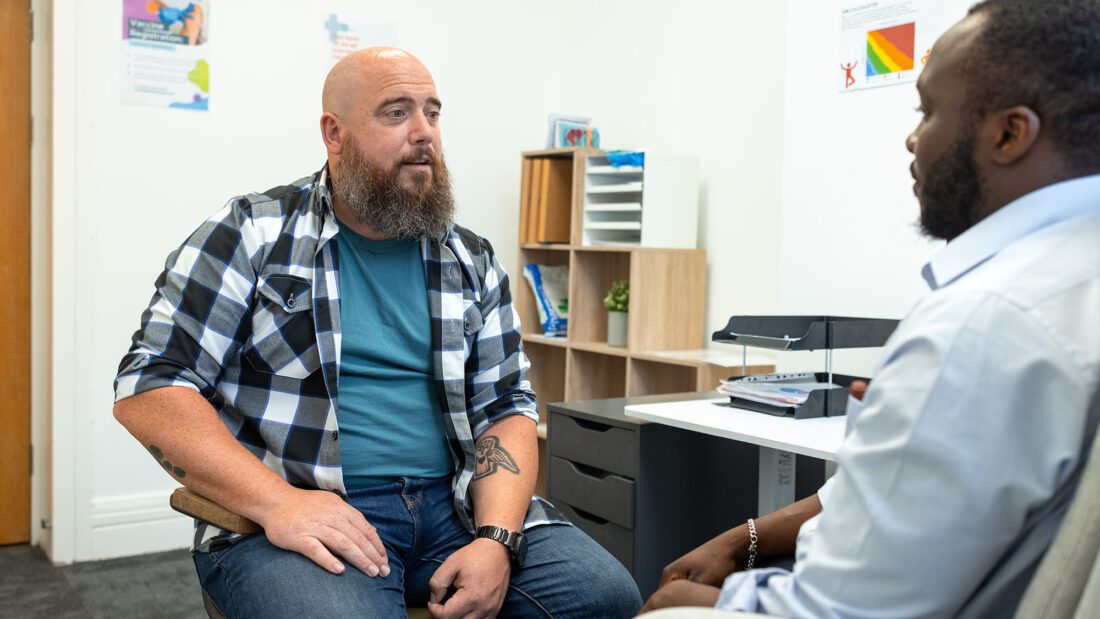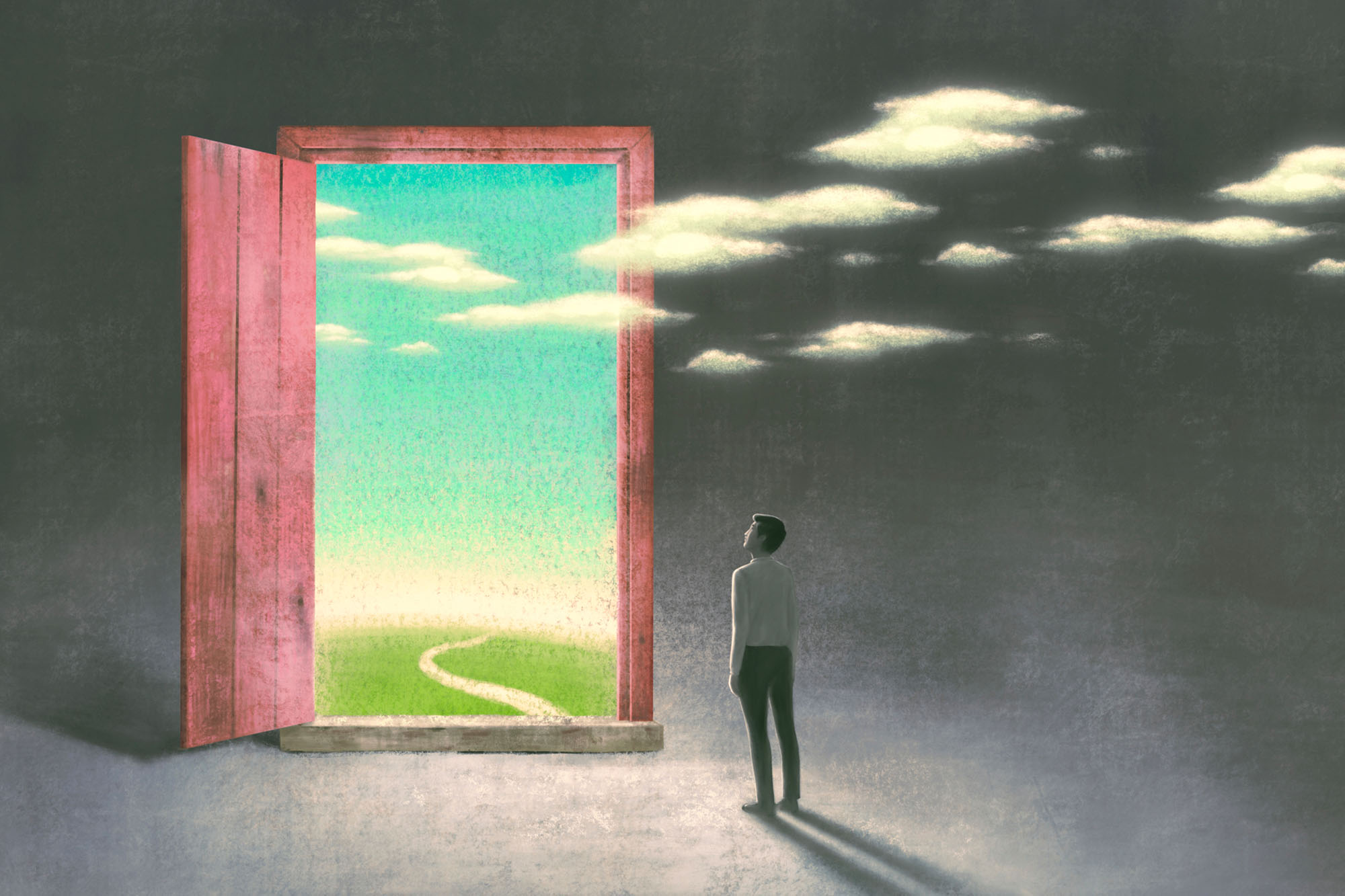
Danny Pasquini has managed to keep his drug use and schizophrenia mostly in check the last six years. He has a girlfriend. He feels safe.
“We got our Danny back,” his mother Teresa says.
It took nearly 30 years to get here.
The 43-year old has cycled through more than 40 different locked psychiatric institutions over the last three decades.
Danny’s stability today is bittersweet, says Teresa, who is now 70. “I just think back to all those years ago,” she says, shaking her head. What if, she asks, Danny had gotten “the right care at the right time in the right place”?
Federal health officials hope a pilot project can improve care for more of the country’s 14 million adults with serious mental illness. California, where Pasquini lives, recently joined this effort, alongside Medicaid programs in 15 other states plus Washington, D.C.
The Centers for Medicare and Medicaid Services (CMS) are sending these states hundreds of millions of dollars to expand and improve short-term care in mental hospitals and other facilities dedicated to 24/7 psychiatric care. States must also invest in community services such as employment support and mobile crisis teams that can help avoid institutionalization in the first place.
This effort, which began during President Trump’s first term, is unfolding amidst uncertainty about the future of America’s mental health care system. While Republicans in Washington slash Medicaid — the country’s single largest source of mental health coverage — they are also elevating mental institutions as a solution to America’s mental health crisis.
Controversial Fix With a Loaded Past
People with serious mental illness across the U.S. languish in places that offer little help. North of 100,000 people with intense mental health needs live on the streets or in homeless shelters, and close to half of all state prison inmates report mental health issues.
This federal experiment aims to open up beds in settings more specialized in care for people experiencing a mental health crisis. When run well and used for short stints, a good psychiatric facility can work the way a hospital does to help people who have chronic physical ailments, says Ruth Shim, a psychiatry professor at the University of California, Davis.
“Most people who have diabetes can manage their [condition],” Shim says. “But every now and then you might have a severe flare-up of your symptoms that requires you to go into the hospital for stabilizing.”
This type of stabilizing care, Shim notes, has become far too hard for people to find.
The cause of that scarcity can, in part, be traced back to a decision in 1965 by Congress to ban Medicaid, which now covers about 1 in 4 people with serious mental illness, from using federal money to pay for most inpatient psychiatric care. Lawmakers worried about costs spiraling out of control. States — and in some cases, counties — have largely been left to fund this level of care on their own, leaving them little incentive to add beds or improve services.
Federal policymakers, however, have made a growing number of exceptions, including most recently this pilot project. The experiment is doling out more than $500 million a year in Medicaid funding for institutional care. Supporters hope this move helps cement support in Washington for modern mental institutions, which have evolved considerably — downsizing from thousands of beds to hundreds, embracing newer treatments and abiding by stronger patient protections.
Some experts remain wary of the risks that this expensive and restrictive level of care can pose. “The evidence to back up this model of institutional psychiatric care is surprisingly thin, given how much money is going into it,” says New York University sociology professor Alex Barnard.
Critics point to the dark and troubled past of patients being abused, neglected and warehoused inside large state mental hospitals. They also highlight evidence that even some modern-day mental institutions — especially a climbing number of for-profit facilities — are still prone to waste and abuse. Disability rights advocates in North Dakota have even mounted multiple campaigns to prevent that state from joining the CMS pilot project.
“There’s always been a group of people that says, ‘We just need [more] institutional care,’ and there’s also a group of people that says, ‘But if we make that too easy … we’ll just sock people away and forget about them,’ ” says Joe Parks, medical director for the National Council for Mental Wellbeing. “There are truths on both sides.”
Given the spectrum of concerns, and the vulnerable population caught in the middle, CMS has designed this experiment with an eye towards rightsizing the role of institutional care in today’s modern mental health care system. Participating states must walk a tight rope to both improve care inside the facilities and build up meaningful community services for people leaving institutions — or hoping to avoid them altogether.
Uphill Climb to Improve Care in Institutions
California’s Medicaid director Tyler Sadwith has just begun to walk this path. California is the largest state to participate in this experiment, and plans to draw more than $200 million in federal funding in its first year, alone.
”Historically speaking, people with mental illness have been neglected by the medical establishment and warehoused away from society,” Sadwith says. California’s plan, dubbed BH Connect, aims to avoid those mistakes. “We’re talking about making sure people are not staying in institutions unnecessarily, or longer than they need to.”
Psychiatric treatment facilities across California could receive up to $1 billion in federal, state and county funding over this five-year experiment — if they meet certain licensing and accreditation criteria. The state also requires every participating facility to assess patients’ medical and social needs in ways aimed at improving the transition after discharge. To discourage any warehousing, the federal government only funds stays up to 60 days.
Still, several former state and federal health officials told Tradeoffs they believe states struggle to ensure patients receive high-quality care in these settings. Reporting by The New York Times and San Francisco Chronicle, as well as academic research, has uncovered problems including understaffing, assaults of patients by staff and keeping patients confined longer than medically necessary, just to increase revenue.
Teresa Pasquini witnessed the serious damage a poor quality of care can inflict when her son landed in his late 20s at a large mental hospital that she describes as “dingy, dark and disrespectful.” The mismanagement of her son Danny’s medications there, she believes, led him to spiral and, ultimately, assault a fellow patient. Danny spent the next four years awaiting trial — cycling between jails and state hospitals — experiencing several traumatizing bouts of solitary confinement before his pending criminal charges were dropped.
Community-Based Care Improvements
California also aims to raise the bar outside of institutions — by doubling down on evidence-based services that help people live more independently.
Counties, which in this state run Medicaid mental health insurance plans, that want to tap into this new federal pool of money for institutional care must also commit to making a robust menu of supports available in the community. Those services include, for example, helping patients get and keep jobs or sending social workers and psychiatrists to their homes to help them manage their physical health, mental health and the day-to-day tasks of life.
Sending teams of mental health professionals on house calls, a model known as assertive community treatment (ACT), is backed by decades of rigorous studies. “We know that it leads to fewer emergency department visits, fewer inpatient hospital and psychiatric facility admissions,” Sadwith says. “Our goal with these services is to make a reality in our communities what we know to be possible through the literature.”
The state’s plan also includes other services not traditionally covered by Medicaid such as temporary help with rent payments.
Bipartisan Push for More Data
Seven years into the CMS pilot project, it’s unclear if care is improving.
Interim data published by states show a mixed bag. Some states, like Indiana, have boosted the number of people on Medicaid who have received institutional care. Others have not. And it remains unclear if inpatient stays are making people safer or healthier long term.
A CMS spokesperson tells Tradeoffs the agency expects to publish more data later this year.
Those data will be valuable with five more states ready to join the project, and a new bipartisan bill in the House of Representatives that would unleash even more federal funding for institutional care across the country. A prior analysis by the nonpartisan Congressional Budget Office projected that a policy similar to the current bill under consideration would cost taxpayers roughly $3 billion a year.
With that much money — and the health and safety of so many vulnerable people on the line — more evidence on what works is sorely needed, says John O’Brien, who served as a senior health official during the Obama administration.
“Whether you’re talking about physical health or behavioral health,” O’Brien says, “if I’m going to get a service, I want to make sure that it’s pretty good.” Without stronger evidence on the value of this institutional level of care, O’Brien warns, neither states nor the federal government truly “know what they’re buying.”
‘It’s the Cruelest Thing We Do’
While Teresa Pasquini supports the House bill — and has supported similar efforts in the past — she also wants to see more investment in community services. She thinks her son Danny revolved in and out of locked settings so many times because he lacked the right support waiting for him on the outside.
Teresa remembers one independent living program that promised Danny “around-the-clock support” including access to a 24/7 help line. “Whatever it takes,” the provider assured her.
Three weeks after he had moved into his new apartment, Danny’s then-girlfriend called Teresa. Danny had a knife to his throat. And, nobody had answered the helpline.
Teresa immediately hung up and dialed 911. Police arrived and tased Danny and took him to the hospital where he was assigned another stint at an inpatient psychiatric facility.
“I think it’s the cruelest thing we do,” Teresa Pasquini says. “Take away someone’s rights, lock them up, get them into the best shape ever … and then let them fall off the cliff again.”
This story was originally published on September 4, 2025, by Tradeoffs, a nonprofit news organization that reports on health care’s toughest choices. You can sign up for Tradeoffs‘ weekly newsletter to get the latest stories in your inbox each Thursday morning. Tradeoffs’ reporting for this story was supported, in part, by the California Health Care Foundation and the Sozosei Foundation.
Authors & Contributors

Leslie Walker
Senior Reporter and Producer, Tradeoffs
Leslie is a senior reporter and producer for Tradeoffs covering a wide range of health policy issues including prescription drugs and Medicare.

Dan Gorenstein
Founder and Executive Editor, Tradeoffs
Dan is the founder and executive editor of Tradeoffs, setting the vision for the organization’s journalism and strategy.





